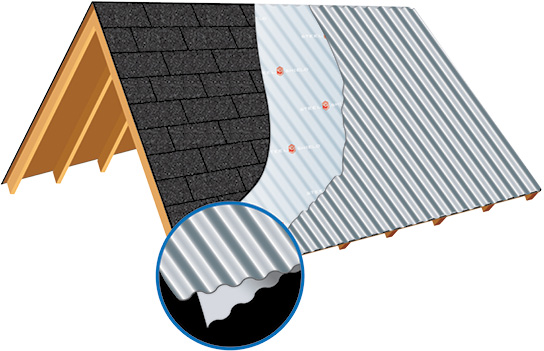By The National Coil Coating Association (NCCA), www.coilcoating.org
Editor’s Note: Included here is a brief report which was originally published on the National Coil Coating Association’s website. It is printed here with permission.
Pine trees are ubiquitous in the U.S. They are fast-growing, adaptable to many climates, and mark the Christmas season with their beauty and the smell of pine. But there is an aggressive streak that lies within.
An issue, prevalent in but not limited to the U.S. Pacific Northwest, is the accumulation of pine needles (also called “pine straw”) on prepainted metal roofing. Although metal roofing is better than asphalt shingles when it comes to shedding leaves, twigs, pine straw, and other debris, there will be occasions when build-up occurs.
In many cases, build-up is harmless, but some failures of the prepainted metal have been noticed where build-up — especially of pine needles — has occurred.
The manner of failure pictured starts with water saturating the pine straw on the roof. Any surface in constant contact with water is a problem waiting to happen. But that’s just the beginning. All biologic materials are complex mixtures of many organic compounds. Oak leaves contain tannins, which are mildly acidic. Pine needles are particularly interesting. The various species of pine trees produce varying types — and varying amounts of — organic compounds. Limonene is the organic compound of greatest concern. It has been formulated into a number of “green” paint strippers and can also be used as a cleaning solvent for removing oils on machine parts. Therefore, it is easy to conceive of a situation where a pile of pine needles, resting on a prepainted metal roof for months or years, would release enough limonene to attack the painted surface and even the metallic-coated steel or aluminum substrate. Additional information on the chemistry of pine needles can be found in NCCA Tool Kit #35, Pine Straw Build-Up on Prepainted Metal Roofing [https://bit.ly/43IZbPU].
Prepainted metal will provide decades of performance, but it is important to avoid pooling water and build-up of water-laden debris, especially pine needles. But don’t hold pine trees responsible; they do what they naturally do, and most of the time we all enjoy their beauty, their wonderful smell, and the minimal care needed for them to thrive. l















